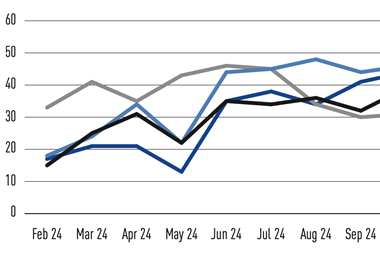If you were a US pension manager faced with the rise and rise of the US market, what would your domestic equity strategy be?
Three plan sponsors have come up with responses that are surprisingly uniform despite their contrasting styles.
The giant $105bn CALPERS has 80% of its $43bn US equity portfolio on a passively indexed basis, so no matter what happens in the market, the fund is committed to riding the peaks and the troughs. CALPERS board member Michael Flaherman says the optimum strategy is to take the ups and the downs as we are very long-term investors”. He adds: “About 15% of our US equity portfolio is with managers charged with outperforming the US markets. They have in general succeeded in doing so.” But these managers have no discretion about allocation - their brief is to beat the market by being fully invested.
But he does concede that a couple of managers who do have discretion about markets and proportions are very pessimistic about the market. “One is very bearish, he puts the extent of overvaluation at 25 to 35%,” says Flaherman, although the market could carry on for considerably longer without adjustment.
In Richmond, the James River Corporation of Virginia pension fund has $1.4bn of defined benefits assets actively managed. This is the result of a change in strategy in the middle of last year. “Up to then our equities were indexed to the Russell 3000,” says Thomas Felker, director of global benefits.
Following an extensive re-view, the decision was to go for a range of active managers. “Our view was that we are long-term investors, able to accept market ups and downs.” Felker adds that all managers are expected to be fully invested. In his view, investors like pension funds may get out of the market on time, but don’t find it so easy to get back in on time.
The defined contribution part of AT&T’s scheme is looked after by investment director James Heller, who reports that though the market has risen dramatically, there has been no real indication that scheme members have been affected. “We have found little shift of assets over the last few months in re-sponse to market moves.”
Members’ asset allocation tends to drift upwards with the market. “But we do not see any rebalancing back, so people’s equity exposure is getting higher.”












No comments yet